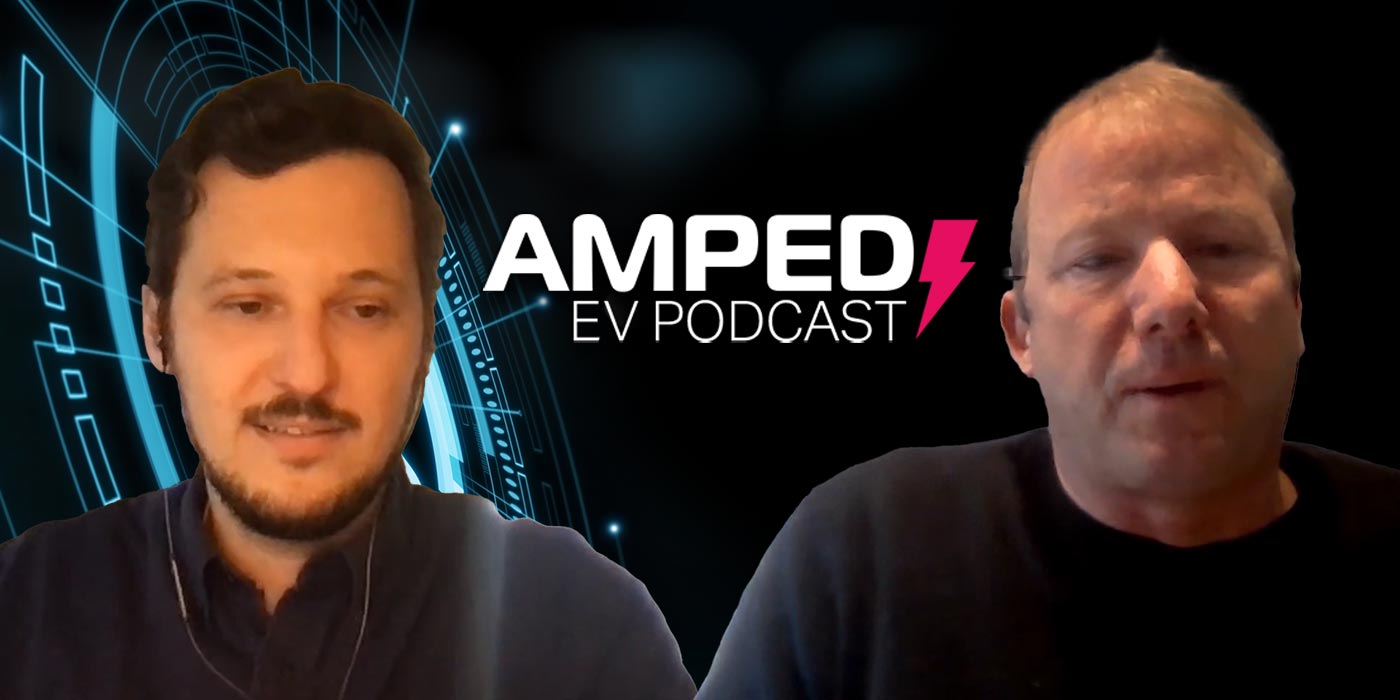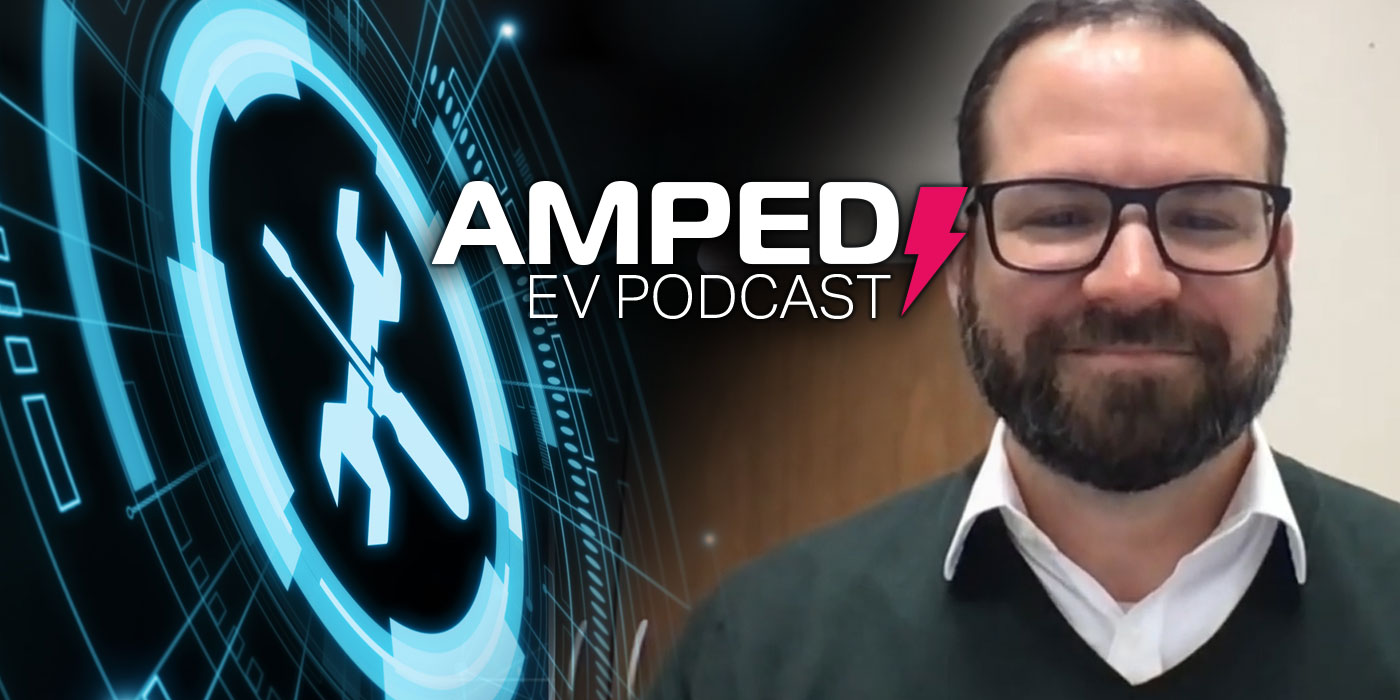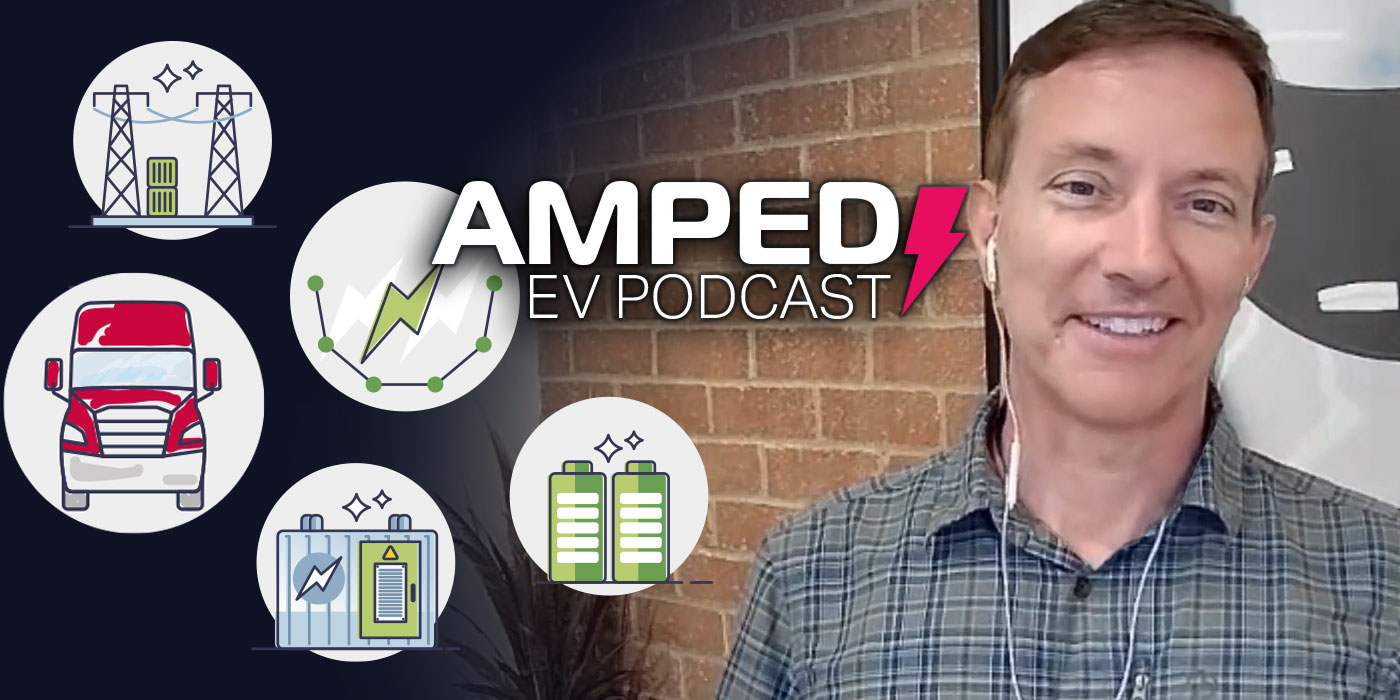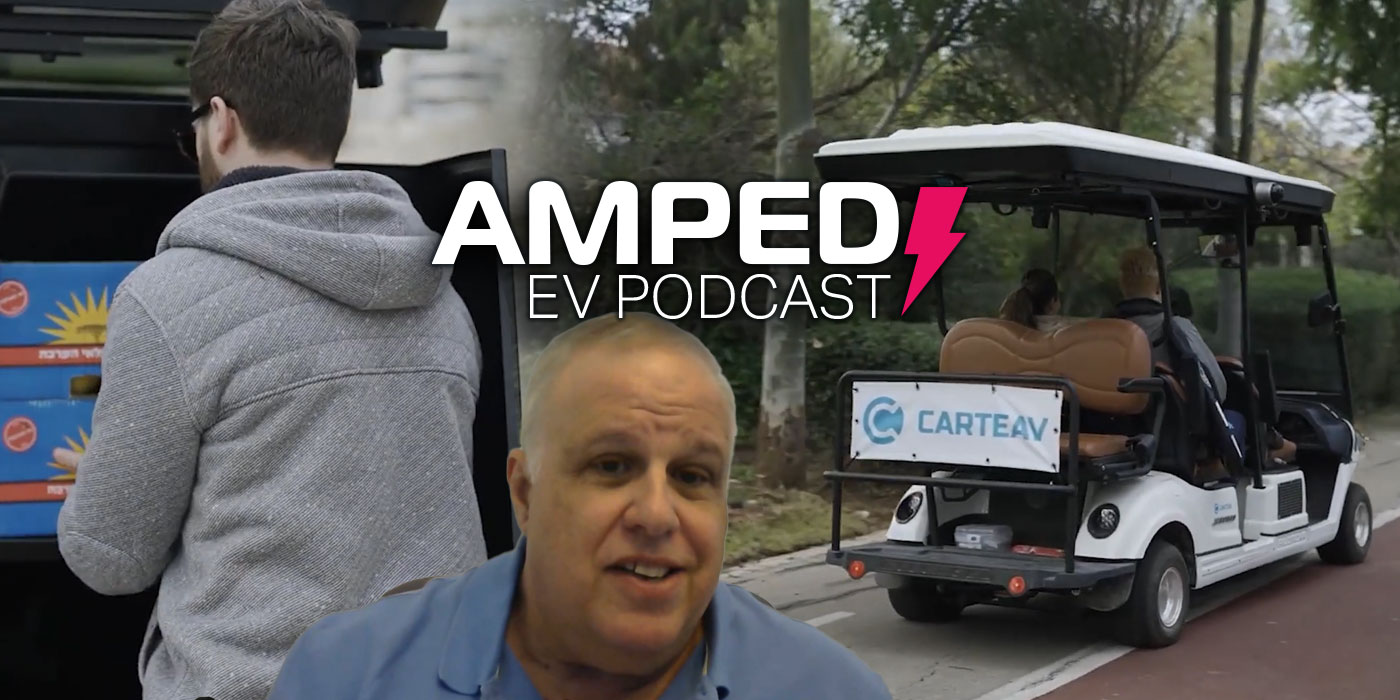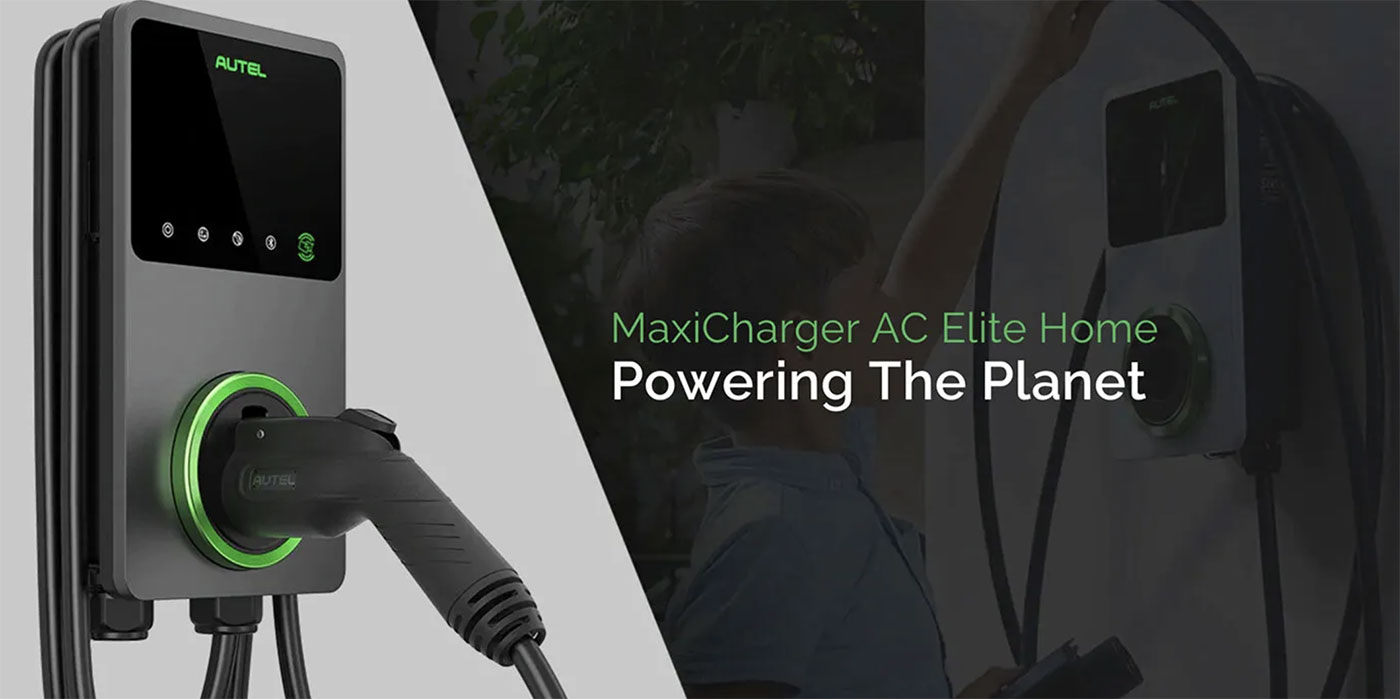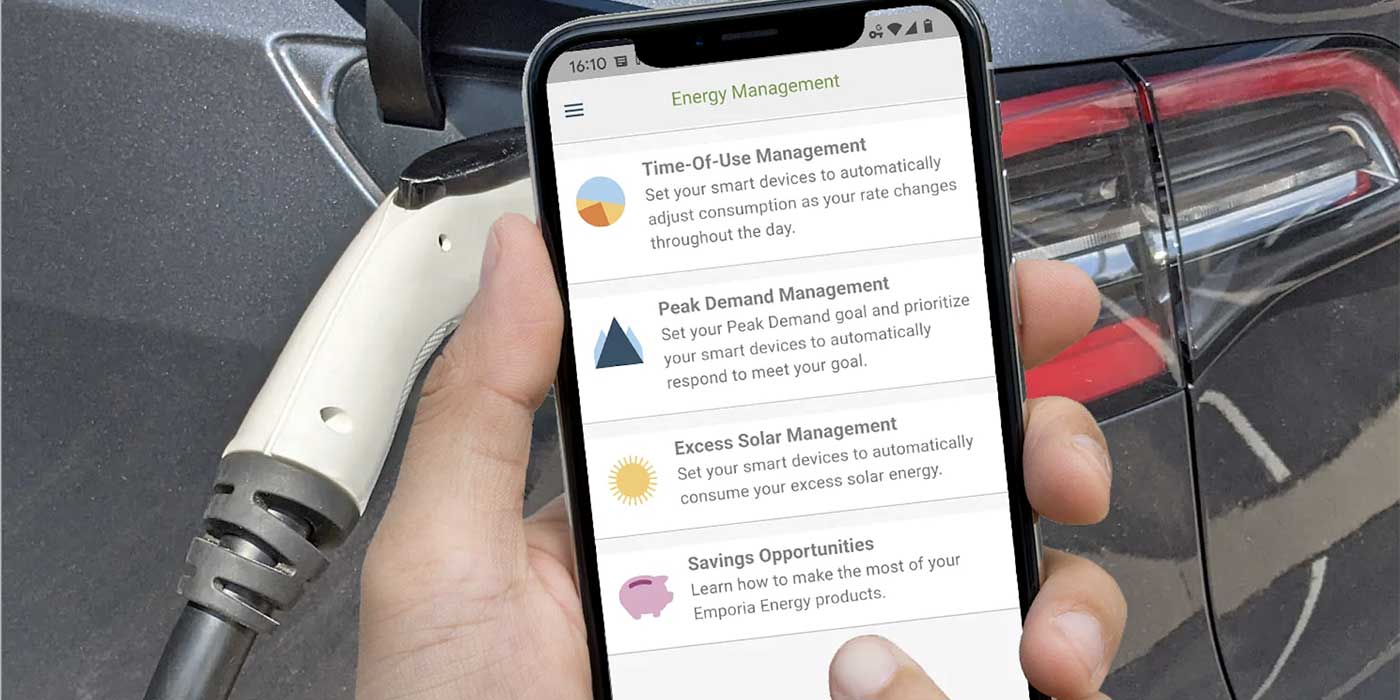Sono Motors might be on to something. The idea is that if a solar-powered electric vehicle can recharge its battery via the sun equal to a driver’s average commute time, the driver will never have to worry about range anxiety creeping into their consciousness ever again. And that’s the goal of the Sono Sion, the company’s solar-powered consumer vehicle with production beginning in 2023.
“The purpose of this car is to cover the daily average distance driven by a commuter because it’s actually not a lot. I believe in the U.S. it’s about 24 km (approx. 15 miles) and in Europe, it’s 16 km (approx. 10 miles) per day, and that’s actually what we recharge by the sun,” says Laurin Hahn, co-founder and CEO of Sono Motors. “It’s four times more range on a single charge than with any other electric vehicle without solar with the same battery change.”
It sounds like a good idea, but does it actually work in practice?
To find out the nitty-gritty details, we brought Hahn onto the show, who provided no shortage of insight into how this technology works, the benefits for drivers, and even where the potential lies for combining solar with other technologies to create what is essentially a sustainable power plant on wheels.
Want more Amped EV podcast? Click here.
Here’s a transcript of the show:
David Sickels: Hello, and welcome back to the Amped EV Podcast. My name is David Sickles. I am the editor for The Buzz.
Jason Morgan: And I’m Jason Morgan, Content Director for Fleet Equipment.
David Sickels: Jason, we talk about range anxiety a lot.
Jason Morgan: I’ve got it right now.
David Sickels: What if that didn’t matter so much?
Jason Morgan: Huh? Tell me more.
David Sickels: Yes, so today we have a very fun, special guest on the show. It is Laurin Hahn. He is the co-founder and CEO of Sono Motors. They are based out of Munich, Germany, and their claim to fame right now is that they are one of the big companies that are really focusing on solar-powered electric vehicles.
Jason Morgan: Oh, cool. I’m looking forward to learning more about this. I always hear about it, but I don’t know much, so looking forward to it.
David Sickels: Yeah, absolutely. They’ve got a consumer vehicle coming out, production starting in 2023, that they’re really excited about. They also upfit commercial vehicles, like buses and trucks, with solar panels to help extend that range, so we’re going to hear a lot about that. I’m really excited for the interview. You just want to get into it?
Jason Morgan: Yeah, I’m amped.
David Sickels: Laurin, thank you so much for joining us on the show today. Really appreciate your time and you being here. Can you give us a little bit about your background? How did you get into the electric solar vehicle development industry?
Laurin Hahn: Yeah, sure. Hi, everyone, and warm welcome from my side here from Germany, Munich. Well, I started nine years ago with my best friend Jona in a small garage here in Munich, and made it from a small garage to the public IPO Nasdaq listed within nine years, actually.
David Sickels: Very nice, very nice. And what appeals to you about the electric vehicle, solar electric development?
Laurin Hahn: Well, we started with the vision of the world without fossil fuels, and back then, we set ourselves the mission of putting solar on every vehicle. Why? Because climate change is mainly caused by fossil fuels. Period. And we said the only way out is if we tackle our mobility problems, depending on oil, depending on crude oil, and accelerating the adoption of electric vehicles. And in looking into that space, you quickly realized electric vehicles back then were expensive, just for good paying customers, and we want to bring this down to mass market, make it affordable for families, for commuters. And then we came up with the idea of solar because it’s so obvious if you think about it. You have basically sun everywhere. And if you can cover the distance driven by a commuter with the sun per day, that would be a good thing. That would be an awesome thing. And that was the point when we said, “Let’s start a solar electric vehicle.”
Jason Morgan: Very cool. So we’re learning more about electric vehicles, but even this is a new wrinkle for me, so I’m hoping, maybe lay some groundwork here. So you are upfitting vehicles with solar panels, right? So if I have a electric vehicle, we can upfit it with solar panels. Is it on the roof, on the hood, and the trunk? Where do you typically install those?
Laurin Hahn: Well, actually we introduced to the world the first affordable solar electric vehicle, the Sion.
Jason Morgan: Okay.
Laurin Hahn: It’s a family car. It’s a C-segment hatchback vehicle. It’s pretty big. It’s actually 4.5 meters long it’s, you know, it’s a daily, everyday car, but it costs only below 30,000 Euros and has good range and has solar panels all over the place. Solar panels into the body, into the bonnet, into the doors, into the roof. And that makes us unique because it gets 112 kilometers, which is, I think, above 70 miles per week on average, based on Munich and Munich is very rainy actually. So, put that car to Phoenix or put that car to, I don’t know, Los Angeles, California. This is the perfect car for every commuter out there.
Jason Morgan: What is the, so it’s charging solar, what’s the battery pack size and what’s the charging time or I mean, we talk a lot about plugin charging time and how much range you get to 80%. How does charging work in a solar capacity then?
Laurin Hahn: Right. It’s it has a 54 kilowatt hour battery pack. It’s an LFP battery from BYD FinDreams. FDB. It is charging up with 75 kilowatts fast charging. So you’re topping up this battery in about 30, 40 minutes with fast judging. So you can also go on the Autobahn, but that’s not the purpose of this car. The purpose of the car is not like long-distance driven in a thousand miles on a single charge. No, the purpose of the car is cover the daily average distance driven by a commuter. Right. Because it’s actually not a lot. I believe in the U.S., it’s 24 kilometers in Europe, it’s 16 kilometers (approx. 10 miles) per day. And that’s actually what we recharge by the sun. And that’s the point. It’s four times more range on a single charge than with any other electric vehicle without solar, with the same battery size. Four times more range. That’s the selling point of solar. That’s the reason why it makes sense putting solar onto the vehicle and not onto the roof of your house.
David Sickels: Yeah. That is really interesting. You say somewhere between 70 and up to 150 even possibly miles per week being recharged by the solar cells on the Sion. You mentioned that’s based on Munich. If you are in a less sunny area, would this be something that you could still take advantage of? Are those numbers based on geographic location or, what if I’m parking in a garage all the time? Is that going to make a difference? Things like that?
Laurin Hahn: Well, if you park in the garage, yes, it makes a difference. But most probably you have also socket. This car is really about the people living in the third floor, don’t have access to their own garage. I mean, 60% of the European inhabitants don’t own their house. This is the perfect car for them. Right. Think about the people who don’t own their house, don’t own their garage, don’t have access to their private parking and charging station. So this is really the car about it. And that’s the point here, right? This is a car for everyday people that just want to go from A to B, and getting to work and back home and don’t worry about recharging.
Jason Morgan: Right. Well even I got to say, I own my own home and I have a garage and I would love to park in it, but it’s full of stuff because I also have children and I mean, I still park in the driveway we’re lucky we get one car in it. If you look down the street on my street, lots of cars outside, because people have the same thing. I mean the garage is storage half the time and kids dumping their bikes.
Laurin Hahn: Exactly, and that’s the point there’s a lot of people have the same issue in the US. If I talk to people from the US, they say exactly the same. Right. They say, I would have access to my own parking lot in the garage, but actually I’m parking outside. So this is the perfect call also for the US.
David Sickels: Absolutely. Sion, are you going into production in, am I correct, 2023 in Europe?
Laurin Hahn: Right? Correct. Produced at Valmet Automotive in Finland in 2023 and capacity planned is 250,000, 260,000 vehicles per year per life cycle, which is roughly 43,000 vehicles per year being produced.
David Sickels: When are your plans to bring that to the U.S.? Do you have plans for that?
Laurin Hahn: Well, we are looking closely at this market. It’s a very interesting market when soon as we are entering it, you will hear from us.
Jason Morgan: That sounds good. Switching gears a little bit, is there any thought to bringing this to commercial segment trucks, buses, even light delivery vans, that kind of thing. We cover that a lot. There’s a lot of excitement, especially in the US and a lot of growth there. And some of these things you mentioned, even the four times more range on a single charge with solar continually filling that battery. Any thoughts to bringing it to the commercial world?
Laurin Hahn: Yes, we actually do. And we actually do it today already.
Laurin Hahn: We have built up a second business unit internally, called Sono Solar, where we focus on B2B business.
Laurin Hahn: We license and sell this solar technology to trucks, buses, reefer vehicles, last minute delivery vehicles. It’s going through the roof right now. The interest is there. The industry is heavily under pressure to get to net zero emissions. They’re looking for solutions, we have it and we deploy it.
Jason Morgan: Very cool.
Laurin Hahn: And yeah, actually working good. We have over 18 contracts and partner arrangements already signed and equipped or buses already signed contracts, with reefer vehicles. I mean, think about reefer as a growing business for online delivery, food delivery, which is a huge market, growing market, and there the potential is huge.
Jason Morgan: Right? Well, and those trailers can often sit a lot and you have to run the reefer to keep them temperature controlled. And so, if you’re able to plug-in some solar to help either offset batteries or depending on what temperature they’re on, potentially run it with solar. I mean, that would be just a boon in terms of reducing emissions and making deliveries safely and properly.
Laurin Hahn: Right. Exactly. Think about all those. Think about how many times did you pass by a parked truck with a reefer unit on it and it was running an engine, even though it was parked there. Just to cool the unit there, just to cool the food [inaudible 00:11:30]. And that’s the point where we can jump in and make it obsolete of burning fossil fuels, obsolete of burning diesel and just put solar panels on it and equip the whole vehicle with that.
David Sickels: So when you’re doing this B2B kind of business, where do you kind of come into the process? Are you helping them kind of decide where they should be placing these solar panels, how many solar panels they might need for their energy needs? What is your role in that?
Laurin Hahn: We do basically two things here. We retrofit vehicles. And second, we actually develop from scratch together, with the OEMs, solar integration into their serious product. So on the first thing, we actually developed a solar retrofit kit for buses, which can be installed on diesel buses, right. And can save diesel, you just install it. It’s saving the consumption of electricity, HVAC, lights, door openers, and all that. And on a second pillar, we actually develop with the customer itself, the product from series from scratch into their series product. And yeah, that usually takes several years, but the potential is just huge. Just think about all these trucks driving out there, all those buses driving out there, they, in our opinion have in the future, all solar panels on the roof.
David Sickels: Absolutely. And speaking of potential, I wanted to bring up bidirectional charging because I feel like combining this bidirectional charging technology with your solar technology could have a lot of potential for generating kind of a sustainable power plant on wheel’s kind of thing. Am I thinking correctly with that?
Laurin Hahn: This is 100% correct. We think about it as a power bank on wheels, a home storage on wheels. The Sion is equipped with an 11 kilowatts AC bidirectional charger. This is amazing because you can actually power up your home with no extra equipment. If you hear about other OEMs claiming that, they need an additional inverter, which costs you several thousand euros. We went for AC bidirectional charger instead of DC bidirectional charger. So the inverter is in the car. So we need just a modified wall box, a standard wall box, which is slightly modified. And then you can do bidirectional charging at home. And what you then have is, for under $30,000, a home storage 54 kilowatt hours on wheels, which you can drive to work and back home. And if you’re at home, you can use it as home storage.
David Sickels: So have you heard from commercial fleets or anything in the B2B world trying to take advantage of that as well?
Laurin Hahn: Yes. Think about camping. Think about RVs, where we integrate solar and they are standing most of the time at your backyard. And then once in a year or twice in a year, you take them to Death Valley or Grand Canyon and make a trip. But if you’re coming back home, they are standing right next to your door being equipped with solar, being equipped with a bidirectional charger and could potentially perfectly power up your home. And that’s what makes us so interesting. And that’s where we see also big potential there.
David Sickels: Wow, absolutely. Well, Lauren, thank you so much for joining us today. This is really exciting technology you’re talking about. I’m excited to see it come to fruition, especially with the Sion next year. That’s going to be a really fun thing to track for me. So I really appreciate you coming and talking about it and letting us know kind of what you got going on down the pike.
Laurin Hahn: Well, thank you so much. I enjoyed to talk. See you soon.
David Sickels: Take care. Thank you.
David Sickels: Okay. So Sono Motors, that is a lot of interesting stuff. I mean, they’re talking about being able to recharge essentially 70 miles approximately using solar power. I mean, in that case, range doesn’t matter so much. I mean, if you’re trying to go across the country, then sure, that’s not going to quite get you there, but for your daily driver.
Jason Morgan: Well, and what I found illuminating – Oh man, I was thinking of that pun that whole interview. I’m so glad we got to use it. I mean the fleet applications of being able to even just supplement some of the battery and charging, this is one really cool example. A little teaser, I am working on something maybe where we’re talking about wireless charging for batteries, right. Kind of a pad that you drive over and charge wirelessly. Solar is another option. Just anything you can do to help that charging cycle. And more range is more range. So to your earlier point, maybe I’m less anxious now.
David Sickels: And not only that, but we’re not just talking about vehicle range here. When we start putting in the bidirectional charging technology. All of a sudden we’re talking about energy production that your fleet can use for whatever it needs. There’s a lot to unlock here I feel like. And when this technology is really up and running, and is something that people are interested in and taking advantage of. There’s a lot of advantages to be had there.
Jason Morgan: Right. Well, and even on the consumer side, the point about the RV sitting next to the house, I immediately thought of four different houses in my neighborhood that I walk by or run by a couple times a week. But yeah, they’re just sitting there. Why not supplement some of your power needs with that, cut down on your electric bill, that kind of stuff. So very interesting. Thanks for setting that one up.
David Sickels: Absolutely. Of course. That was a great interview. Thanks everybody. We’ll catch you next time.






